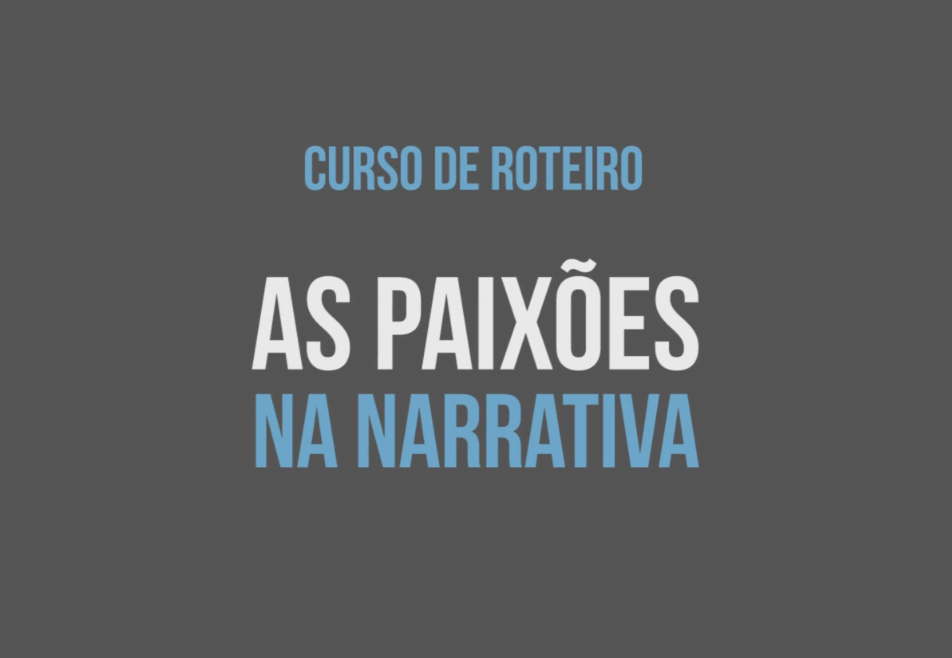
Passions in the Narrative
14 video classes | 5.5 hours of content
• Introduction to the theory
• 1st Module: Narrative structures
• 2st Module: Effects of "passions" on characters
• 3st Module: Invisible Layers of the Characters
• Certificate of completion
• Series analyzed: Game of Thrones (HBO), Chernobyl (HBO), Westworld (HBO)
• Subtitles: English, Spanish, French and Korean
• Book: free online access to the work "The Passions in Characters"
COURSE CONTENT
Introduction
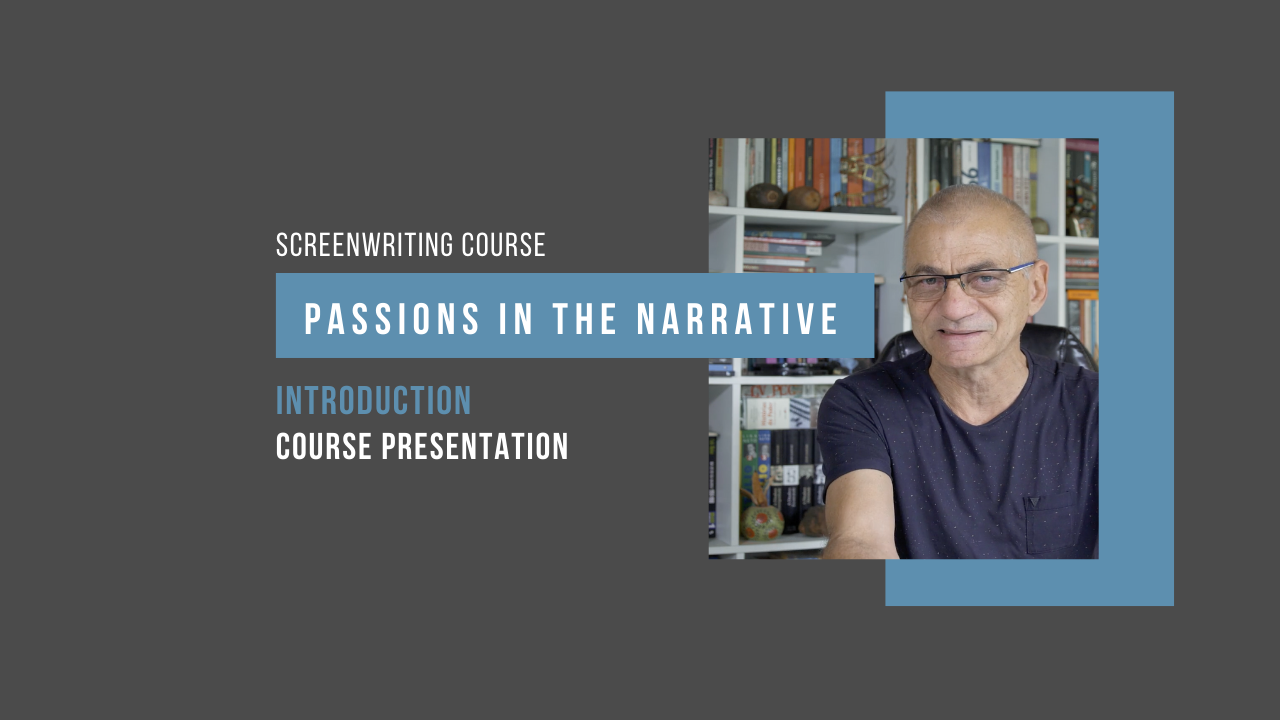
Class 1
Course Presentation (26 min)
Made up of 14 video classes, in three modules: an introduction to the theory; a 1st module covering narrative structures; a 2nd module on the effect of “passions” on characters; and a 3rd module on the characters' invisible layers, which form their dramatic arc, both at the level of action and at the level of their sensations and emotions.
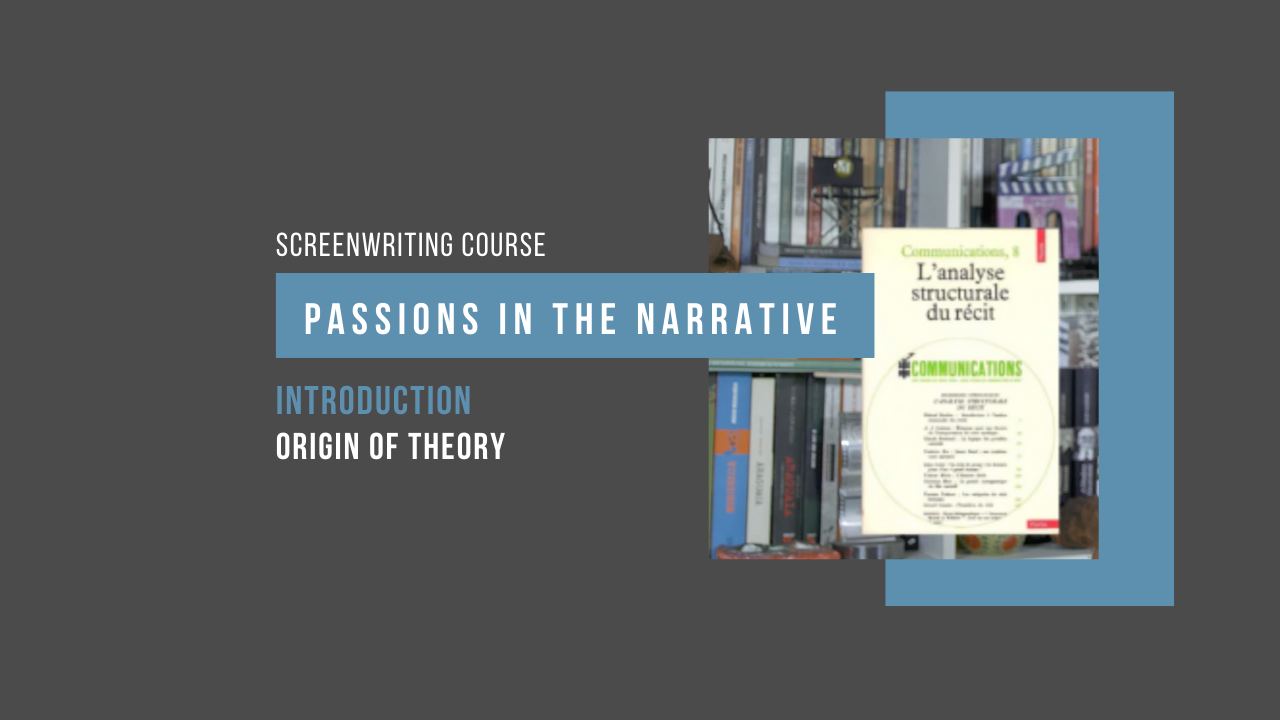
Class 2
Origin of Theory (8 min)
The theory applied in this course originates from the Semiotics of Passions and Narrative Semiotics, developed in France in the 1990s by the linguist A. J. Greimas. Hermes Leal has followed, in the last three decades, the development of this new science that aims to understand “meaning”, applying it to the development of fictional narrative.

Class 3
Who is Hermes Leal (8 min)
Learn more about the author of the theory Hermes Leal, screenwriter, director and producer of several works, between series and films. Journalist, writer, documentary filmmaker and adventurer, Indiana Jones biographer, he holds a master's degree in Cinema, with a specialization in Screenwriting, and a doctorate in Linguistics and Semiotics of the Passions. His research in the area has already added up to three decades of dedication.
Module 1: Action Structures
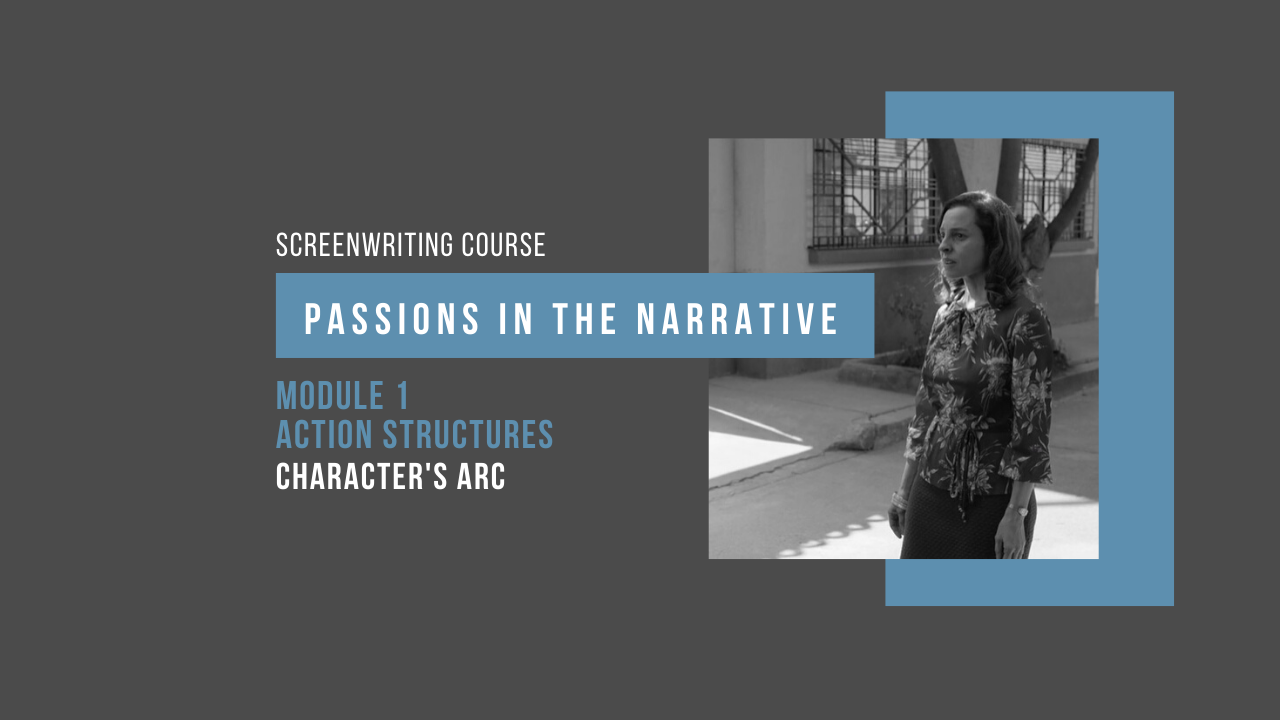
Class 4
Character Arc (37 min)
This class shows the basic principles of this theory, highlighting the Narrative Program, and details how to operate the script structure scheme in three acts, now composed, in the 1st, 2nd and 3rd acts, respectively, of character phases in the script: Contract , Manipulation and Sanction. The theory is applied, in order to show its arcs, in the characters Sofia, from “Roma”, Jon Snow, from “Game of Thrones”, Django, from “Django Unchained”, Justine, from “Melancholia”, and Ryan, from “Gravity”.
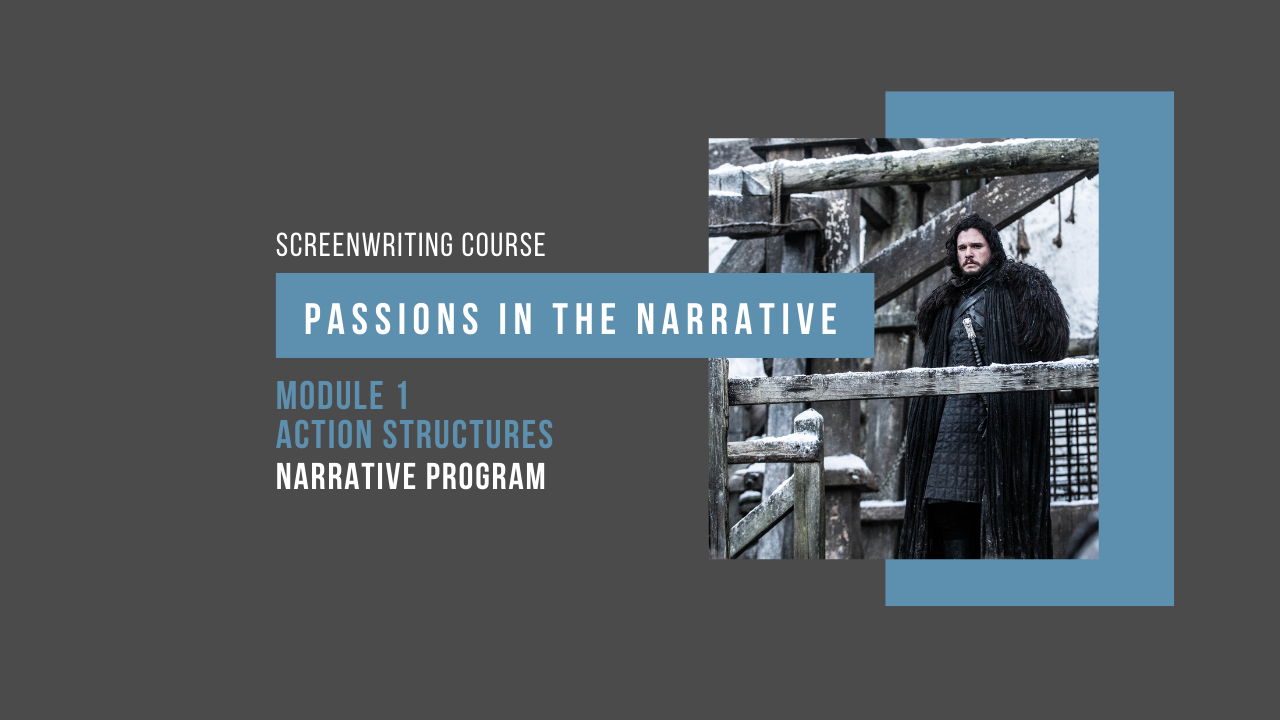
Class 5
Narrative Program (14 min)
Class on the basic scheme of theory, the Narrative Program has its application in the script as a necessary tool for each character to develop his journey in three acts. The scheme is formed from a dramatic core of only three roles in the script occupied by characters: subject, object and sender. This core is responsible for generating the intrigue. The theory is applied in the NPs in Arya's revenge journey ("GoT") and Cleo's journey to "be-mother" ("Roma").
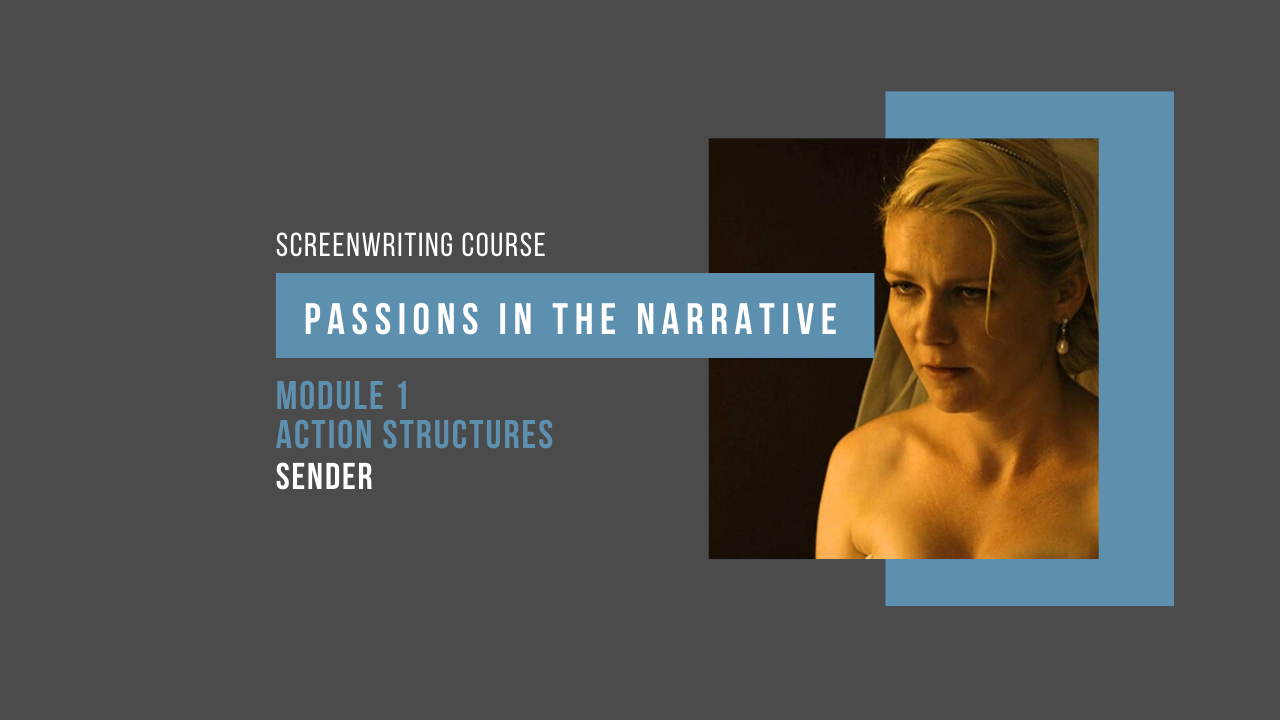
Class 6
Sender (28 min)
Class to highlight the “sender”, a function in the script that serves to generate conflicts between the characters, as well as being a generator of power for the subject to achieve competence to move from one act to another in his journey. The scheme shows different types of senders, such as the Dragons who give power to Daenerys, and Jaqar who donates “know-to kill” to Arya, as well as the planet Melancholy is a transcendent sender to Justine ("Melancholy").
Module 2: Scheme of passions
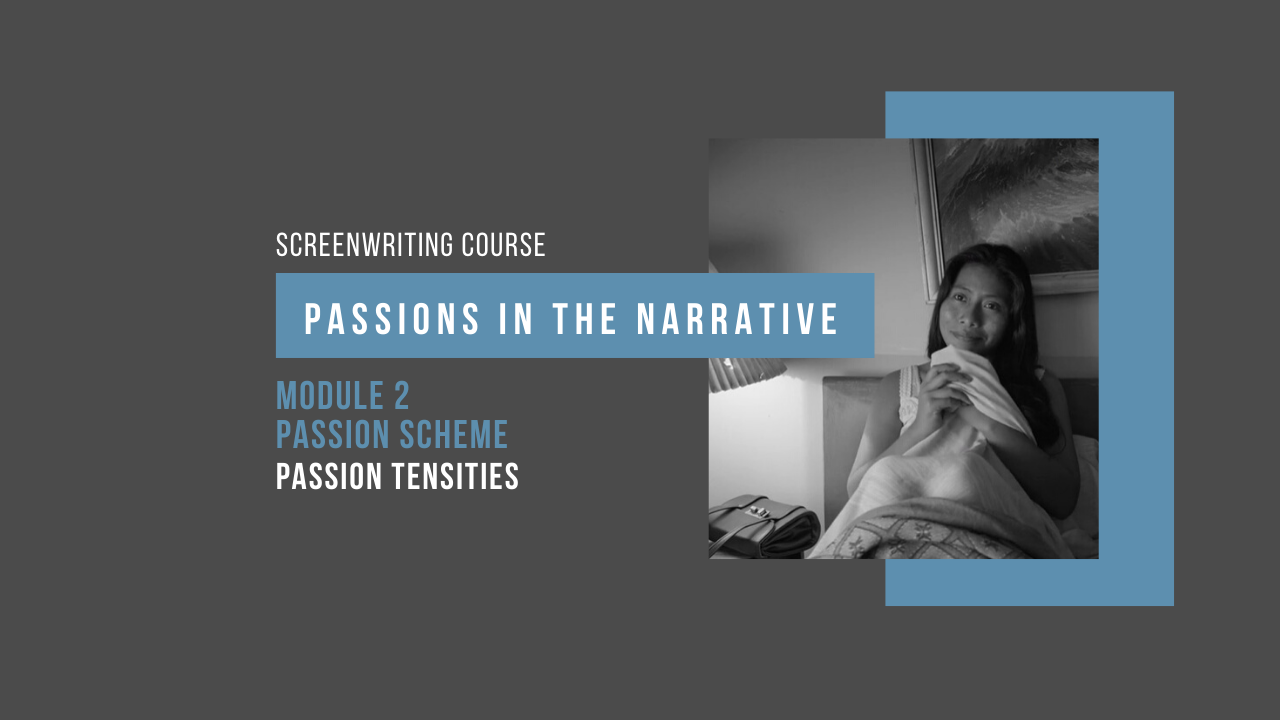
Class 7
Tensivity of the Passions (9 min)
Class to show how to use the effects of passions on characters, mastering the different types of passion and their characteristics, such as “hate”, “anger”, “boredom”, “melancholy” and “anger”. There are passions aimed at the past, such as “remorse” and “revenge”, and others towards the future, such as “fear” and “fear”. The theory is applied proving its efficiency in exploring the subjectivity of passions, and how they generate the tensive structures of characters in series and films.
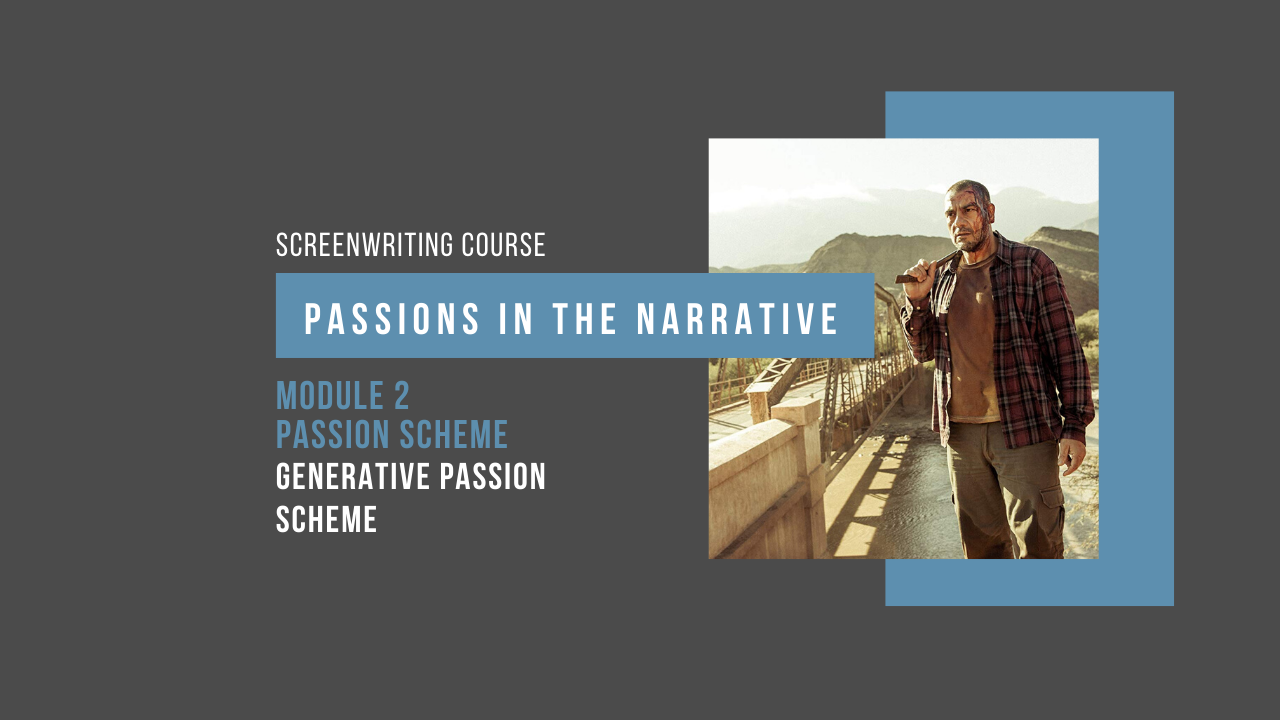
Class 8
Generative Scheme of Passions (9 min)
A continuation of the previous class, this class puts the passions affecting the characters in a scheme, in which a character, in the waiting state, is affected by an emotion that, depending on his inclination, like Arya's to rebel, will transform into anger, then into hatred, and finally into a desire for revenge. Special focus on the passion of “cholera”, as it governs the characters Sofia, in “Roma”, and Mr. Bombita, in “Wild Tales”.
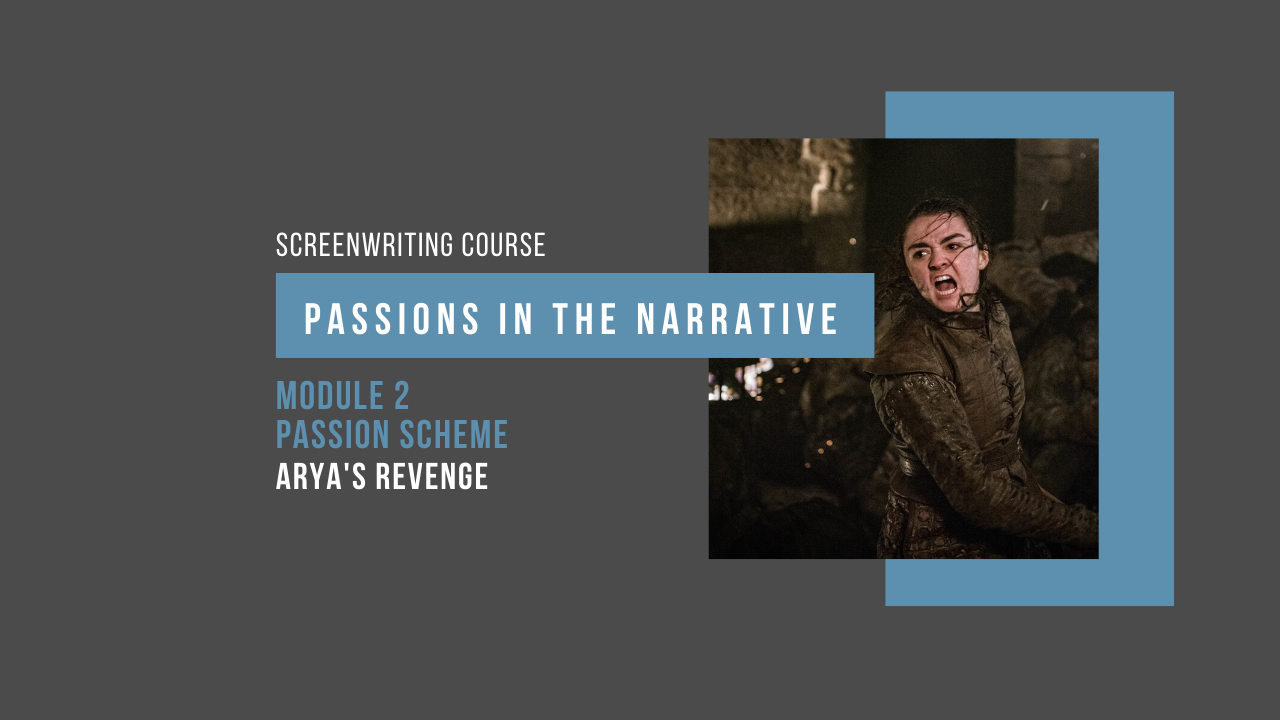
Class 9
Arya's Revenge (36 min)
Class to address a particular passion, “revenge”, and how it is generated by a “hate”, demonstrating, in Arya’s NP, how her revenge scheme is elaborated, which can be applied in several revenge narratives. The scheme references characters in other revenge narratives, such as Shakespeare's "Hamlet". It shows how to assemble dramatic arcs based on passions governing the characters' actions.
Module 3: Invisible layer of characters
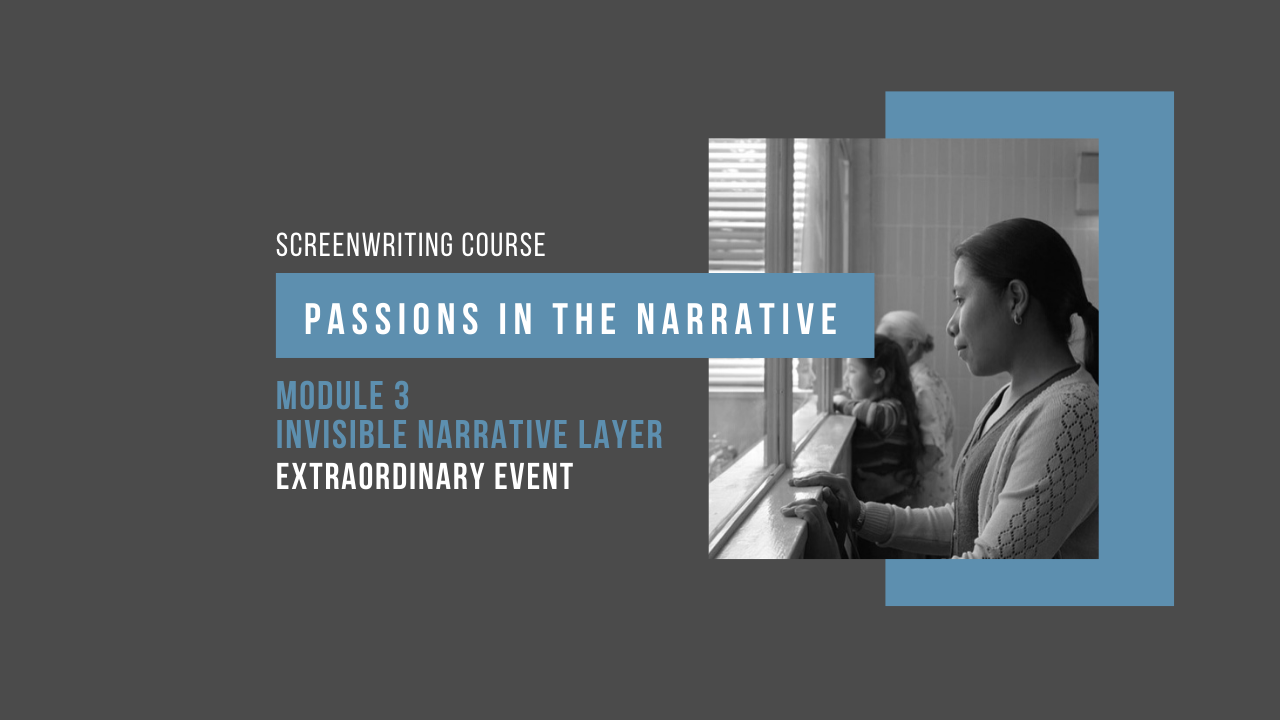
Class 10
Extraordinary Event (31 min)
Class to show the scheme of the Extraordinary Event, as being the one that generates other schemes, such as the Surprise, and that promotes the plot points of the script. This scheme proves necessary to provoke changes in the character and in the narrative. The event is a type of action or emotion that interrupts the actions and feelings of the characters, an impact that changes the course of the story and the characters themselves, causing “damage” and “fractures” in their soul. It is the event that promotes the narrative and character arcs.
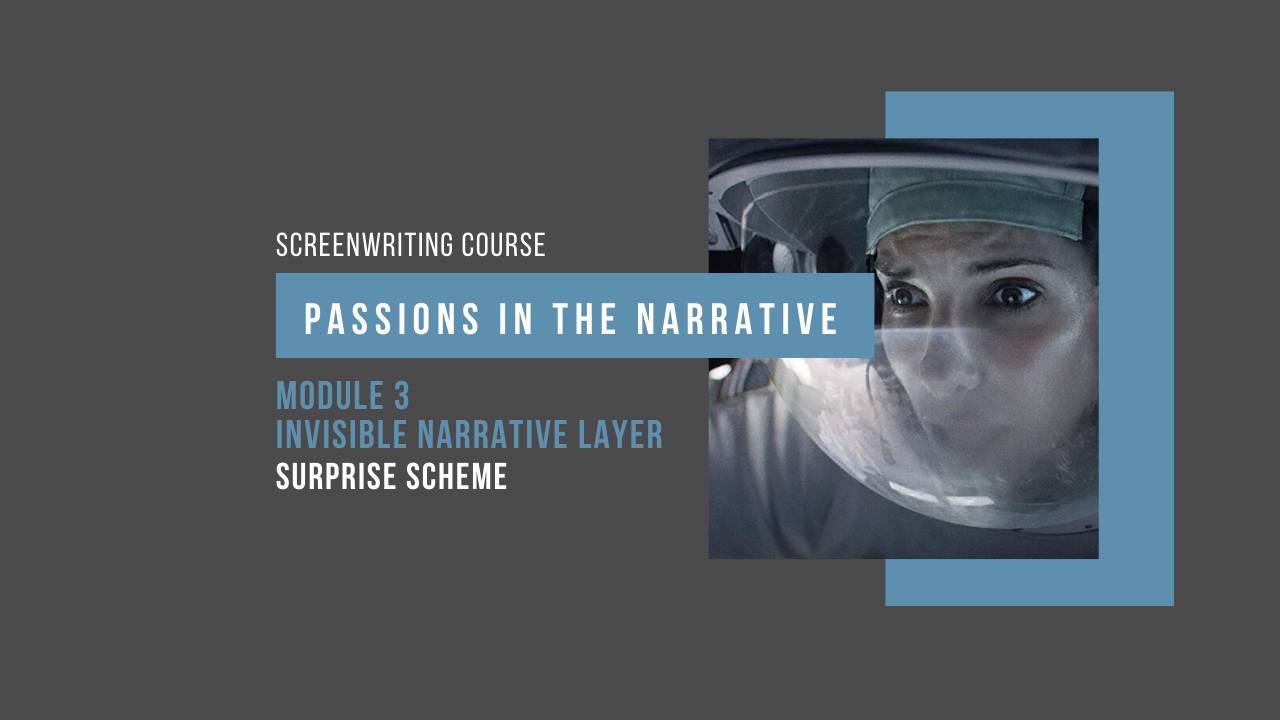
Class 11
Surprise Scheme (14 min)
Class to show how we can surprise the spectator, as well as work on the scheme of surprise in the narrative itself. It teaches how to generate “surprise” in the character and in the narrative, starting from a state of waiting for the expected and an unexpected object arrives causing, after the impact of the surprise, an admiration or a perception. How the concessive and unexpected events occurred that surprised the characters Cleo, Sofia and Jon Snow, and that defined their destinies from surprises. Because the events of surprise are “concessive”, they were not foreseen to happen.
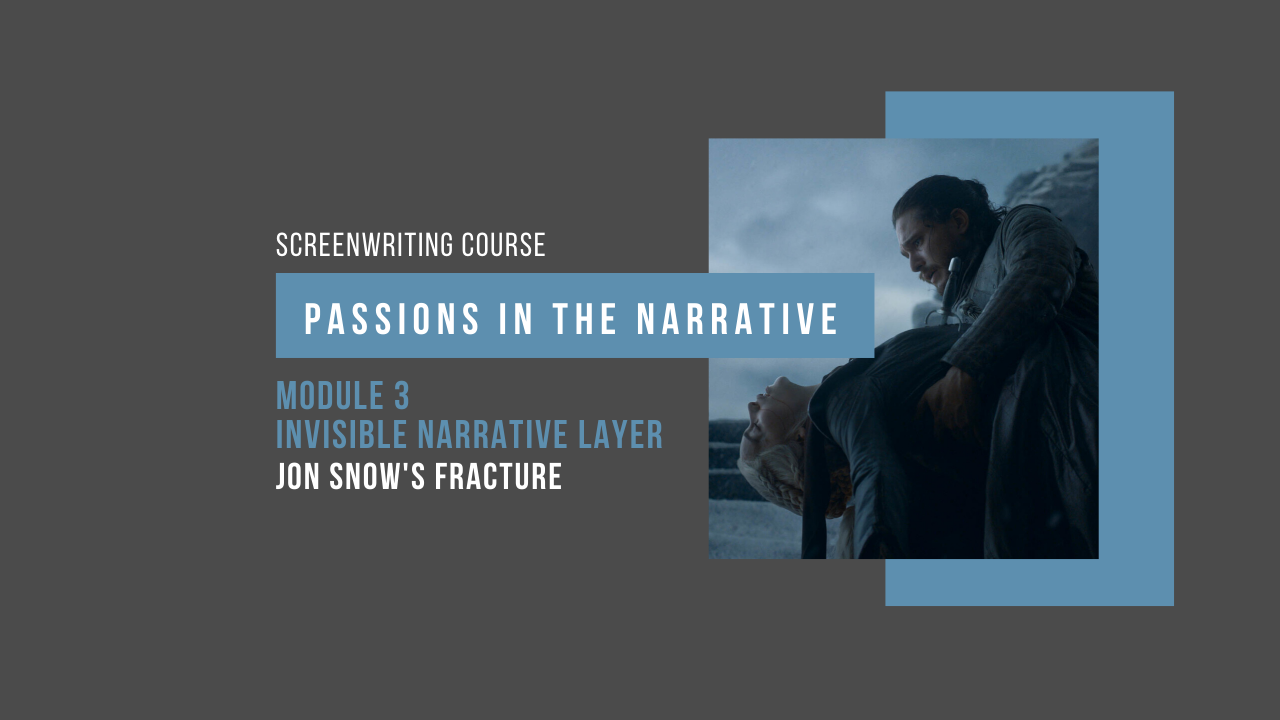
Class 12
Jon Snow's Fracture (22 min)
Class to deepen the learning of the schemes of the event and the surprise, in which the “fracture” is the result of these two, and causes the suffering in the character. The damage is what he feels he has suffered during the occurrence of an Extraordinary Event, and how it has affected his passions. The damage can be physical, as in the case of the broken characters of “GoT”, or in the soul, as in the case of Jon Snow, whose fracture in his soul is being a bastard, causing him a strong passion of revolt and rebellion due this damage. It shows that the Disney and superhero scheme is formed from damage and fractures in their souls.
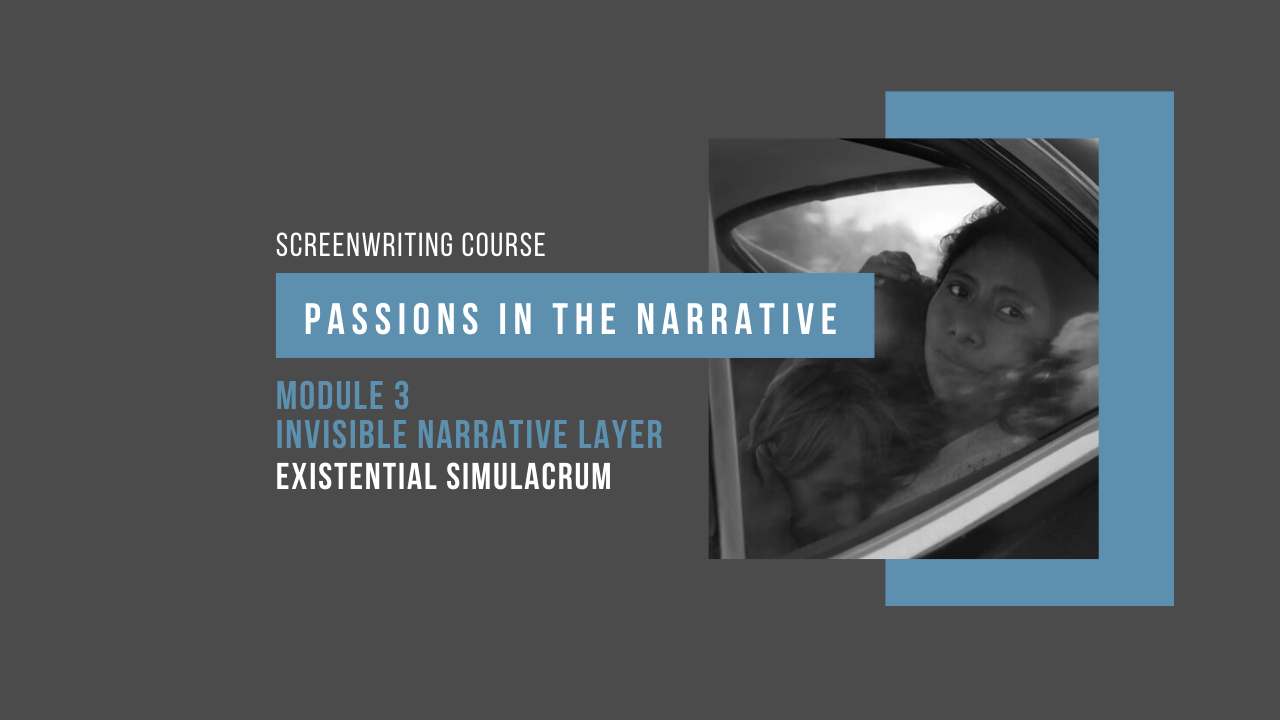
Class 13
Existential Simulacrum (28 min)
This class explains one of the deeper stages of storytelling and characters. The scheme of the three acts of the script is now elaborated in the subjective layer of the character, by its modes of existence: Virtualized, Updated and Realized. The scheme is formed by the characters' “modes of existence”, governed by the verbal modes of “wanting” in the Contract phase, “knowing” in the Manipulation phase, and “power” in the Sanction. Just like the NP, every character also has its Existential Simulacrum, where, in addition to these modes of existence, they also generate a potentialization in a “concessive” way, skipping stages.
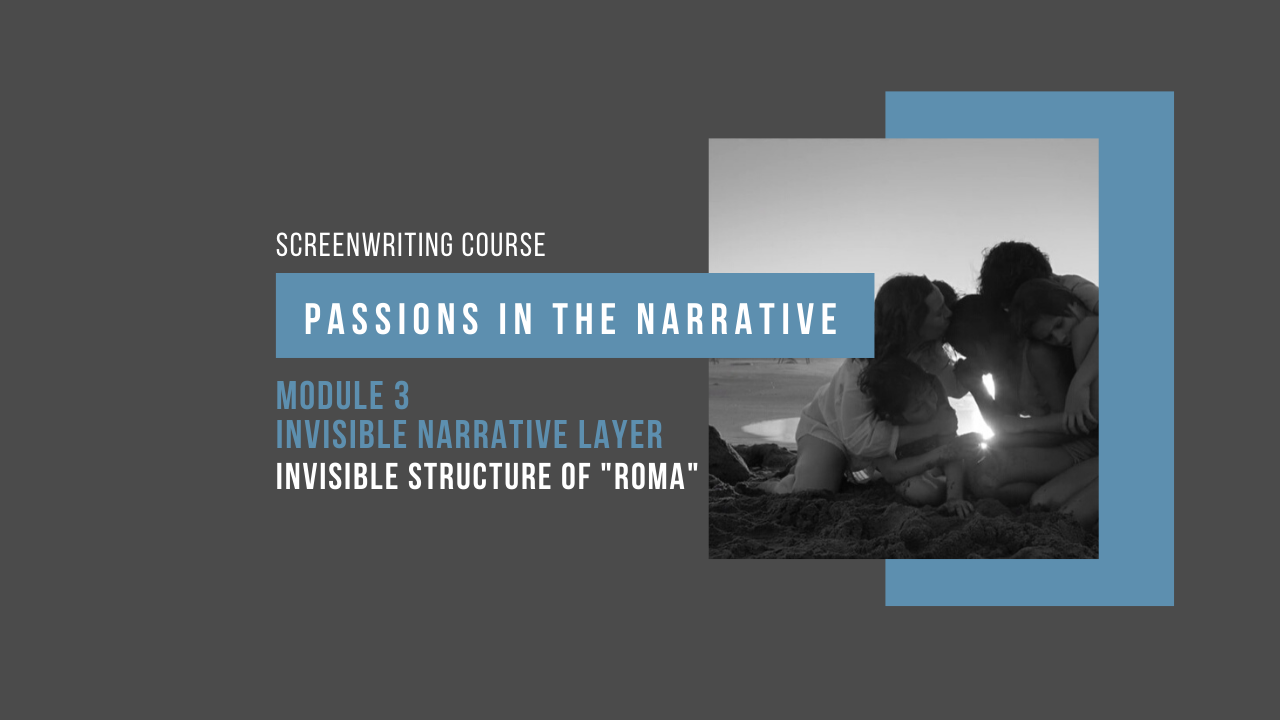
Class 14
Invisible Structure of “Rome” (37 min)
The most important and dense class that aims to show how a character's arc develops just by his sensations, without necessarily going through great actions. Using the original script of “Roma”, the class shows how to build dense characters, like Cleo and Sofia, building the curve of these types of characters with the plot points caused by their “feelings” and not by their actions. The film shows how Cleo's curve, in a PN of to "be-mother", has its arc from the feeling of having already had a child, the desire for this child to die and the feeling of remorse for having had the previous sensations.